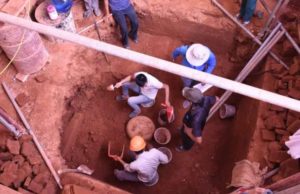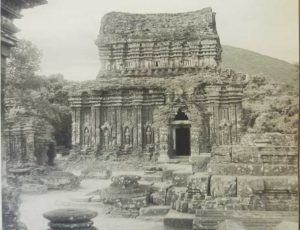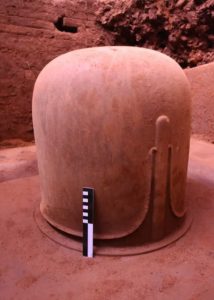Myson emerges as the abode of Lord Shiva in Central Vietnam
Besides, Shiva’s linga and yoni, a large number of images of Hindu gods and goddesses have been discovered from the vicinity of Myson.
Located at Myson valley, Phu Duy commune, Duy Xuyen district, Quang Nam province, in Central Vietnam, the Myson sanctuary has been a Centre of power of the kingdom of Champa. The inhabitants of the kingdom were called Chams who ruled the vast area of the Indo-china region.
Linguistically and ethnically, they belong to the Malayo-Polynesian linguistic group of the Austronesian family. Myson was brought to light in the year 1898. In the Vietnamese language, Myson means beautiful mountains. The Chams constructed over 300 temples made of baked bricks and worshipped Hindu deities. Moreover, they did not use materials for jointing the bricks. Local wild glue may be used by them to join the bricks.

The epigraphic sources reveal the fact that the Chams were Saivites and worshipped Shiva as their primordial god. During the second half of the fourth century A.D., King Bhadravarman founded the first sanctuary constructed in the cirque of Myson and dedicated to Bhadresvara, a form of Lord Shiva.
The Chams considered Myson as a pilgrimage of the kingdom of Champa. The sanctuary is located in a small valley having natural spring surrounded by mountains. The mountain to the south of the monuments signifies Mahaparvata, as Kailash, the abode of Lord Shiva and natural spring signified Mahanadi as river Ganga.

Over 70 temples are found in the vicinity of Myson. They were constructed during the period of Cham rulers. Monsieur Henri Parmentier, a French scholar has done an exemplary study and classified these temples into different groups. According to Parmentier, 17 architectural vestiges belong to Group A, 27 to Groups B, C, D, 12 to E and F Groups, 5 to Groups H and 1-2 and one to each of Group K, L, M, N, and O. They were built during 7th – 17th century.
The Myson temples have a variety of Indian architectural designs symbolizing the greatness and purity of Mount Meru, the mythical sacred mountain at the Centre of the universe. The reliefs of the beautiful floral designs enhance their beauty. Besides, Shiva’s linga and yoni, a large number of images of Hindu gods and goddesses have been discovered from the vicinity of Myson.
Myson architectural design differs from other South East Asian temple architectural styles that were not less massive than the Angkor Wat (Cambodia), Borobudur and Prambanan (Indonesia). Here, both baked bricks and carved stones are used in the construction of the temples. Based on architectural design, the temples of Myson were constructed in the following four periods:

Besides building massive temples, Chams were devotees of Lord Shiva which appear from the existence of a large number of Shiva linga and the images of goddess Parvati, Ganesh, Kartikey, and Nandi, carrier of Lord Shiva. They are on display in the Myson museum, Cham museum, and other museums of Vietnam.
It is great that the Archaeological Survey of India (ASI) has started its long due project and excavated a ninth-century Siva linga. The scholars of ASI deserve heartiest congratulations for their exemplary work. The sandstone Shiva linga and peeth testify the fact that Chams were Shaivite and Myson was the religious seat of Chams. During the period of their rule, rulers worshipped lord Shiva for the prosperity of the Cham kingdom. Shiva was their protector. Under the protection of Lord Shiva for a thousand years, Chams successfully ruled the kingdom.
During the war with America, Myson was the hiding and war action place for Vietnamese warriors. The site was heavily bombarded by the Americans without caring about the heritage monuments of Vietnamese. Most of the buildings were ruined by the indiscriminate American bombardment. The excavated Shiva linga by ASI must be a part of the temple.
The worshippers of Lord Shiva have finally won the war. The devastated temples are being taken care of by the Vietnamese people. Some foreign agencies have come forward to restore the heritage of Vietnam which has been a UNESCO world heritage site.
Author:

Dr. Bachchan Kumar, Ph.D. & D.Litt.
Former In-charge,
South-East Asian Studies,
Indira Gandhi National Centre for the Arts (IGNCA),
New Delhi.



